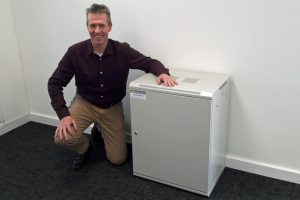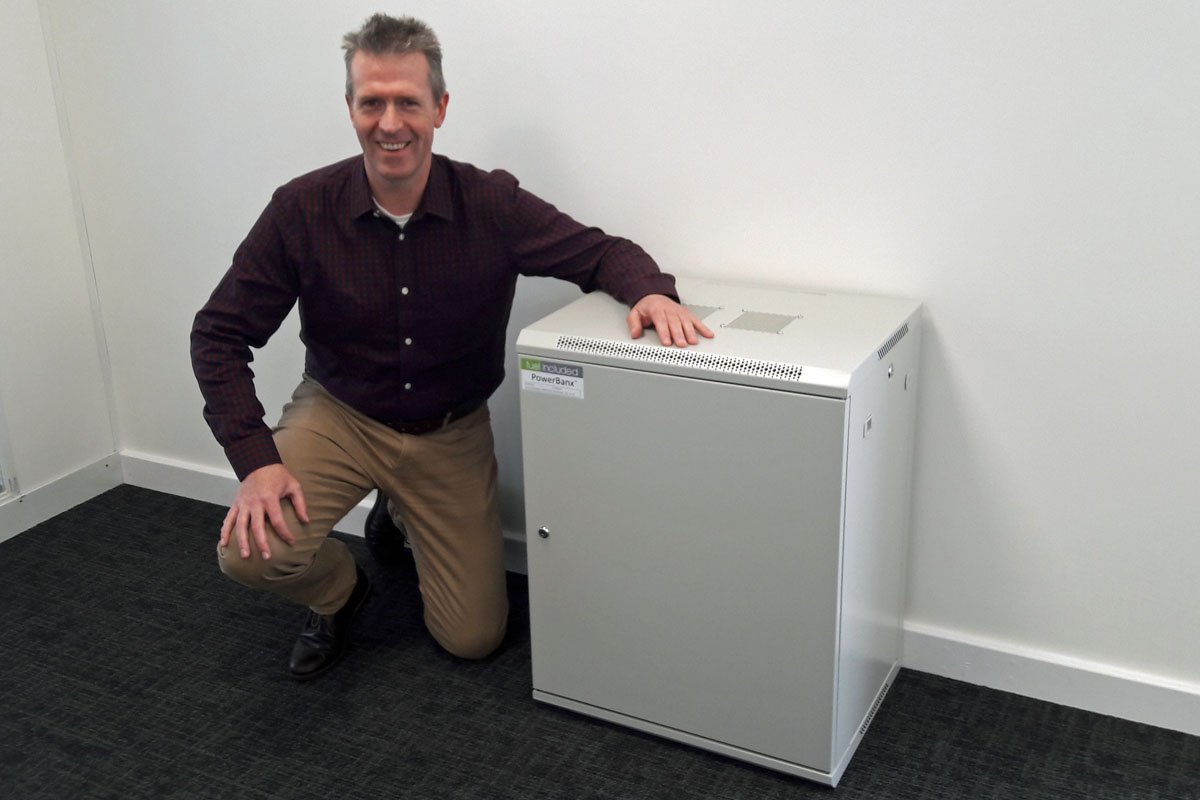Australians are embracing the ‘virtual power plant’, which advocates say can protect the grid, save money and combat the climate crisis
Power to the people might remain a political pipe dream, but changes taking place in the energy market across Australia are making suburban homeowners the unlikely disruptors in an Uber-style revolution that promises to change how we all live.
Despite a toxic political debate about energy that cost the last prime minister his job, thousands of households are showing Canberra the way forward as they group their individual solar systems together to form local networks that help to slash bills, stabilise the electricity grid and cut carbon emissions.

Tanjent’s PowerBanx X battery storage, in pale grey enclosure (Image: Tanjent)
Alan Hedges, a retiree in South Australia, is part of one so-called “virtual power plant” (VPP), hailed this week by the energy commission as the way of the future.
With solar panels feeding a 10kWh storage battery at his house in Gilberton in Adelaide, Hedges is close to self-sufficient in power and has seen his bills fall to fraction of what he used to pay. The VPP means that electricity stored in his battery – and from others on the network – flows into the national grid at times of peak demand to balance the system and prevent outages.
So not only is he reaping the financial benefits, he is also doing his bit to stave off the mass blackouts that brought the state to a standstill in September 2016.
“I received my first bill the other day and it was $46.57 for 57 days, which works out at $1.68 per day,” he said. That’s 84% cheaper than his old bills of more than $1,000 a quarter.
“I thought ‘wow’, they must have made a mistake. But I’ve read it through and it’s right. It’s amazing.”
Read more: The Guardian




